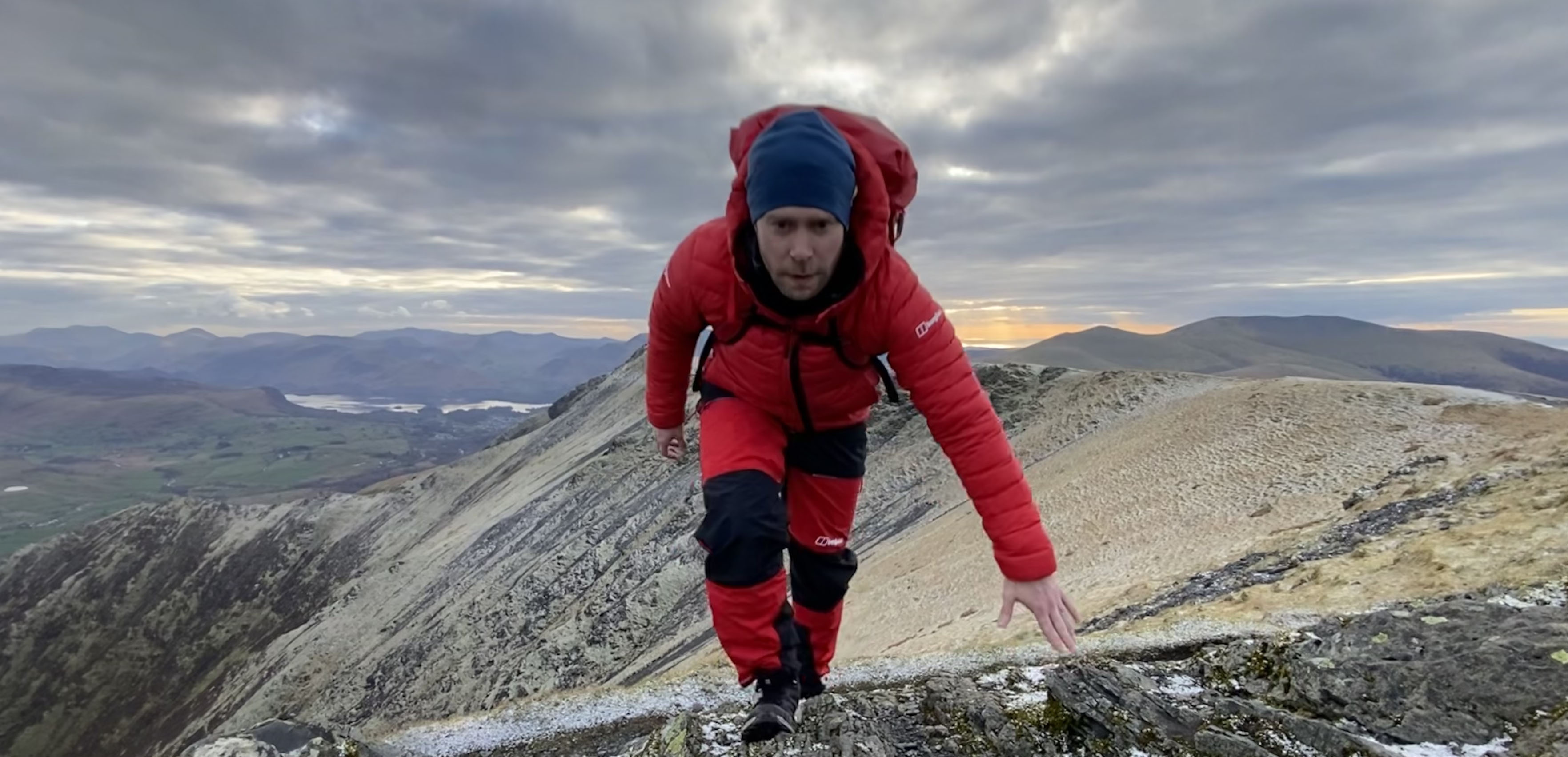
After a hiatus of several years, Berghaus’s high-performance Extrem range returned during the back end of 2022 and it has triggered an avalanche of praise in the process. This historic range, designed with for the needs of serious climbers and mountaineers, has been the British brand’s flagship in terms of quality since it was first launched in 1986. I’ve already taken to the hills in the award winning MTN Guide MW Hoody and recently I’ve been putting other key pieces of Extrem’s Guide and Seeker collections to the test.
The Extrem range consists of “three pillars”: MTN Guide, MTN Arete and MTN Seeker. The clothing and equipment in the premium MTN Guide collection is designed for proficient mountaineers and mountain professionals (the clue is obviously in the name), while the MTN Arete is aimed at ski mountaineers and ski tourers.
The slightly less pricey MTN Seeker pillar consists of durable kit that’s still high in quality, without the additional specialized features of the Guide and Arete collections. As Berghaus put it in their Extrem guidebook, the Seeker kit is “built to do a bloody good job and nothing more”. How very British.
I took to the trails in the MTN Seeker MW Down Hoody to see how much of a bloody good job it did both in Britain’s mountains and in the Italian Dolomites, and to assess how it compares to the best down jackets on the market.
Berghaus MTN Seeker MW Down Hoody: first impressions
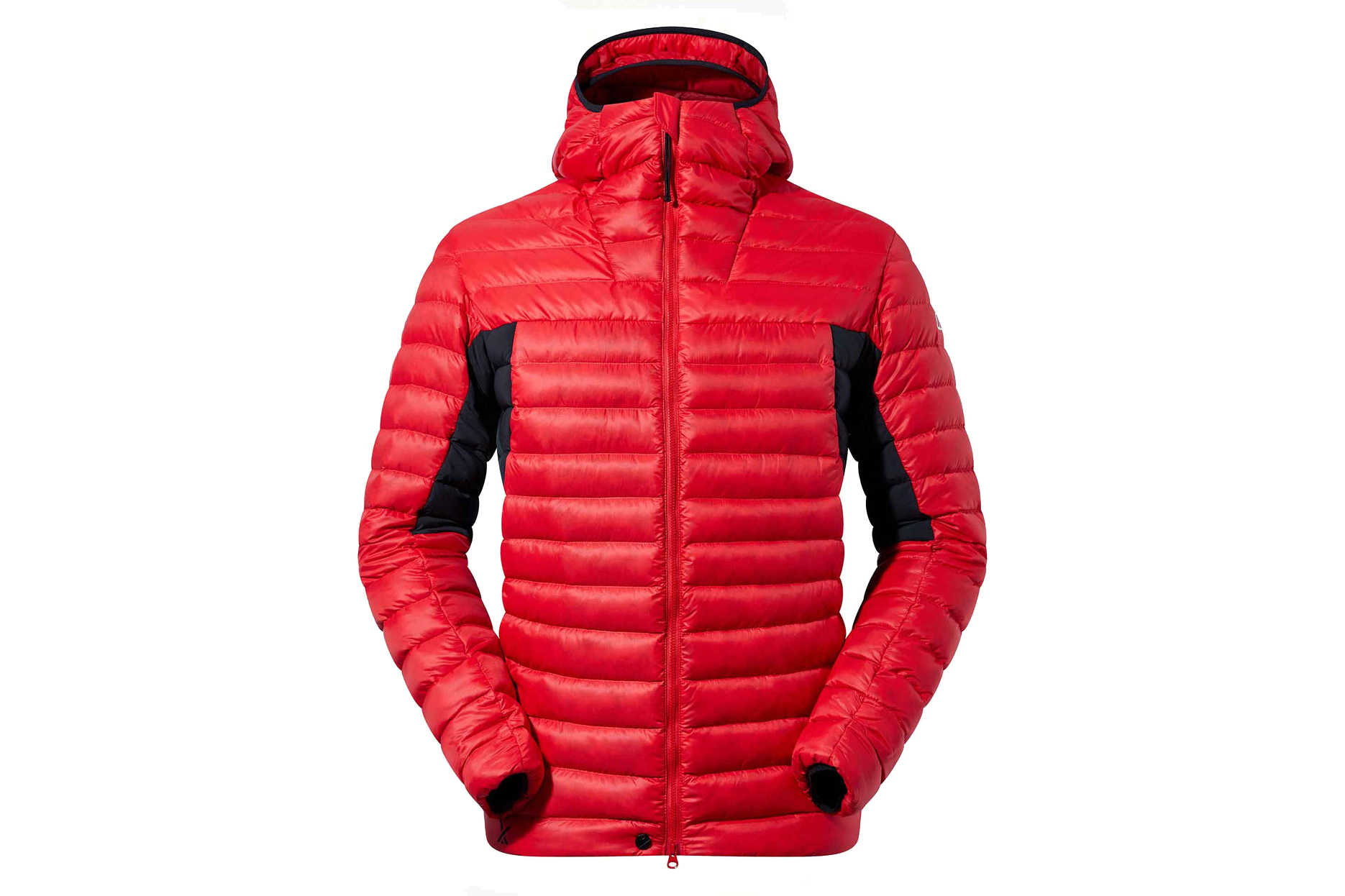
List price: £250 (UK) / €280 (EU)
Fill: 100% Down (90% Down; 10% Goose Feather)
Unisex: Male and female versions available
Sizes: XS–2XL
Materials: Bluesign approved 100% recycled Pertex® Quantum with DWR
Weight: 458g / 16oz
Colors: Men’s: Goji Berry, Jet Black / Women’s: Jet Black, Goji Berry/Haute Red
Best use: Backpacking and mountaineering
I’m slightly colorblind but even I can see that the “Goji Red” colorway is wonderfully bold and bright. For me, its color makes it look like something the Ferrari Formula One team might wear in the pits at the Monaco Grand Prix. This isn't a bad thing, the Extrem range has been widely praised for its red, grey and black color scheme, as well as its aesthetics in general. It’s a down jacket that looks the part.
Its Pertex Quantum shell fabric is plush to touch, while the jacket is immediately comfortable. The fit isn’t too tight, which is important when it comes to layering for those sub-zero Scottish winter missions. There are slightly more elastic regions, such as under the arms, featuring woven stretch baffles for increased freedom of movement.
To wear, the Seeker isn’t obviously warm to begin with, but once the down insulation starts to do its thing, I soon found myself getting nicely toasty. Weighing in at 458g, it’s towards the lighter end of the down jacket spectrum, making it an ideal option for fast and light, alpine pursuits, or for serious wild campers looking for something that’s at once toasty, packable and high performing.
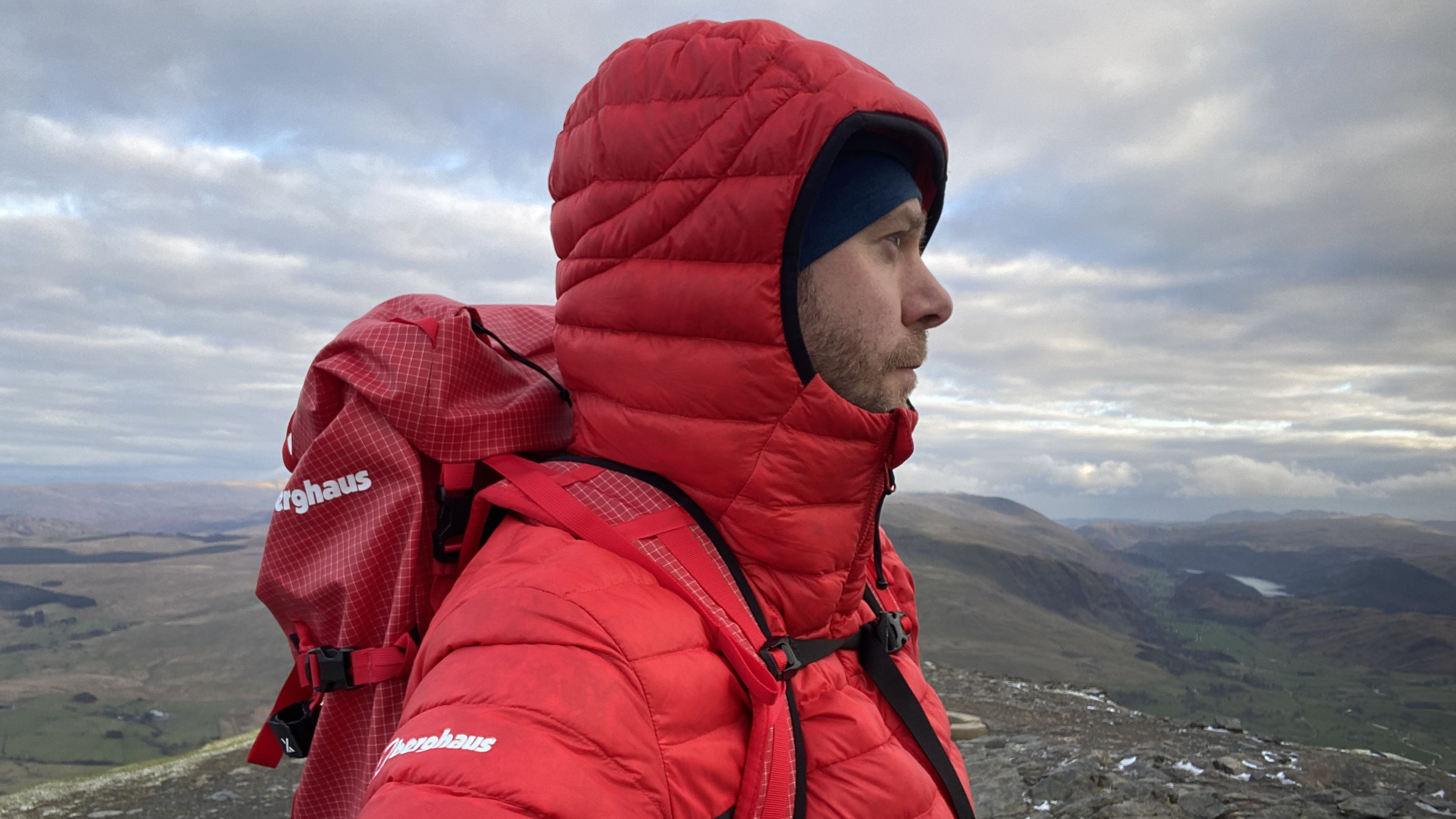
Features
There’s nothing too flashy – racing car red aside – about the design of the Seeker Down Hoody. Its main features are understated and do what they need to without a fuss.
There are three zippered pockets: two large exterior high hand warmers and one interior breast compartment. The exterior pockets are well placed, as I could access them while wearing a meaty hiking backpack, yet could still use them as cozy handwarmers on cold mornings. There’s enough room for my phone and a compass in the interior pocket, though – unlike the exterior pockets – it isn’t large enough for a topographical map, which is a shame.
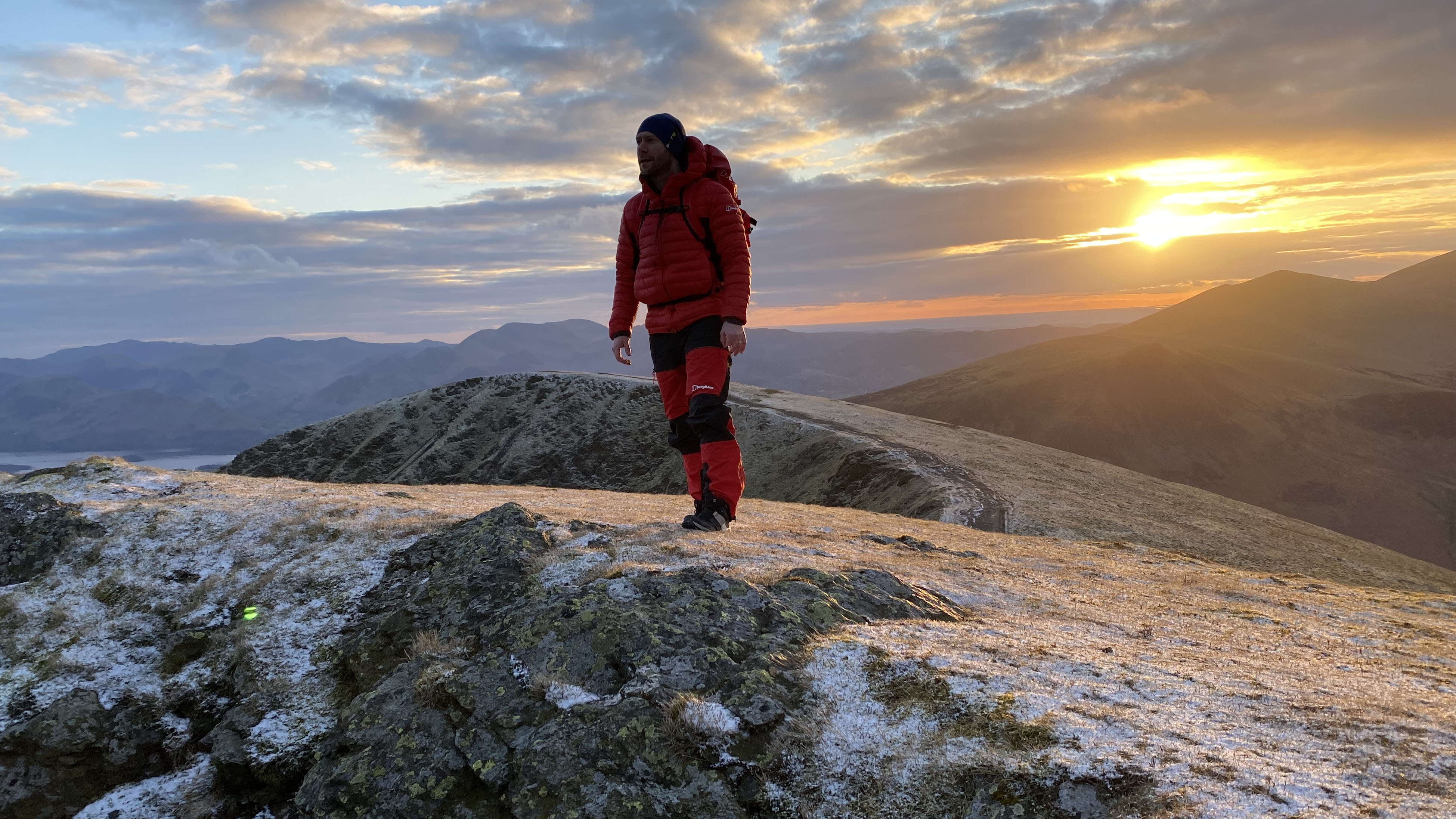
The stiffened peaked hood is helmet compatible, fitting nicely around a climbing helmet or similar. It’s tightened or loosened with a single point adjustment at the back, which is easy to manipulate when wearing hiking gloves.
Attention has been paid to the sleeves and the hem, with features like an internal cuff gusset and dual hem adjustment to keep the warmth in and windblown spindrift out. Likewise, the main front zip is reinforced with an internal zip guard to hold onto that hard won heat.
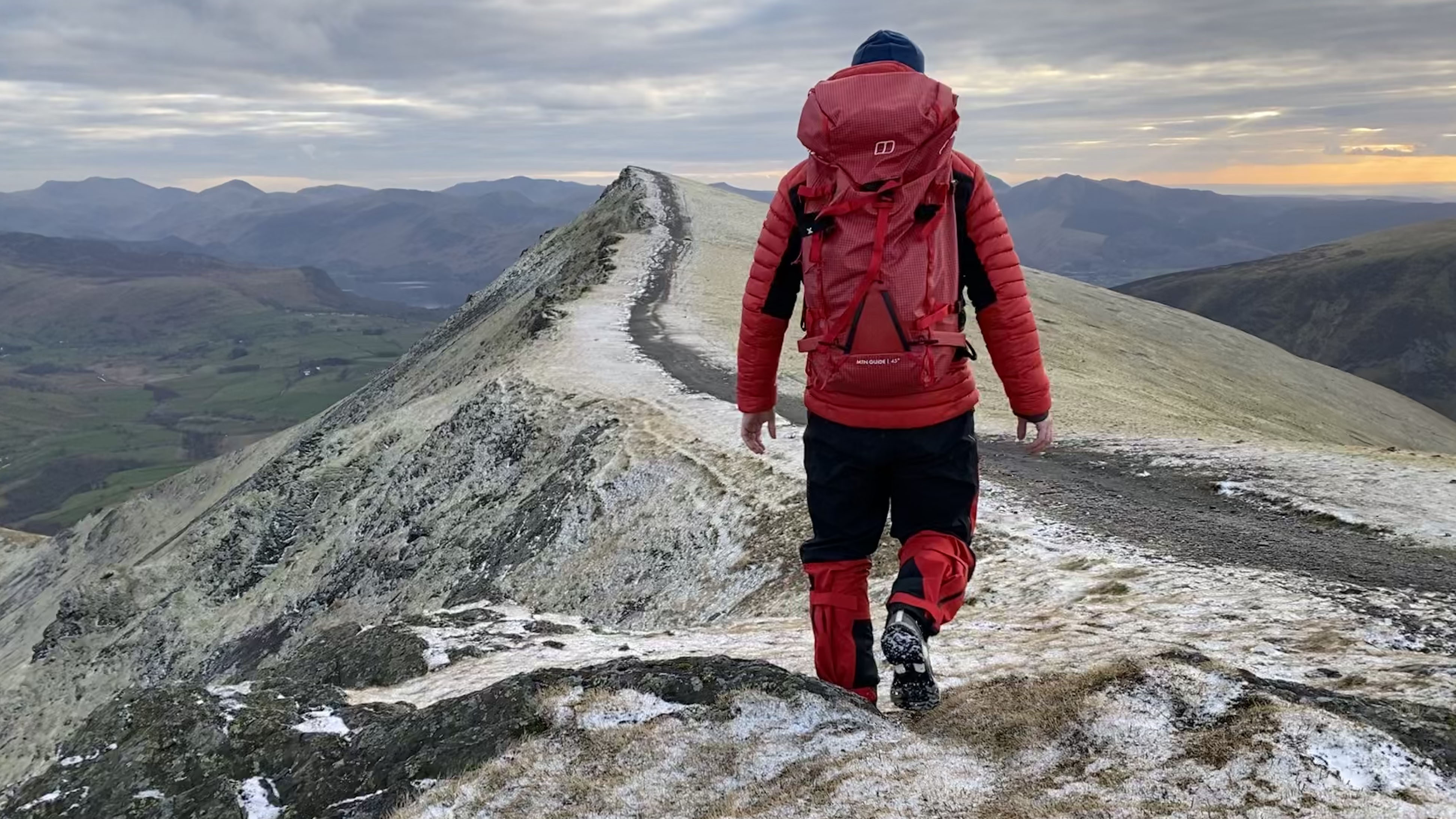
Finally, as the wearer is often likely to be either out before dawn or heading back in the fading evening light, there’s reflective detailing for increased visibility.
On the trails
I tested the Seeker Down Hoody during early spring and pitted it against a few freezing (if a little snow-shorn) days in the mountains of the English Lake District and in the sunny, but still below freezing, valleys of the Italian Dolomites in the Alps.
Even when the mercury was hovering around the zero mark, I found the Seeker Down Hoody too warm to wear during ascents – although I’ve discovered over the years that I’m someone who ‘runs hot’ during mountain days.
This warmth is no criticism, as it's the first thing I want from my down jacket. Besides, I’ve never been one to habitually don a puffer for an ascent unless I was pitching the route and would expect to be stationary for long periods while belaying. In this case, it would be a good option, though not as toasty as dedicated belay jackets.
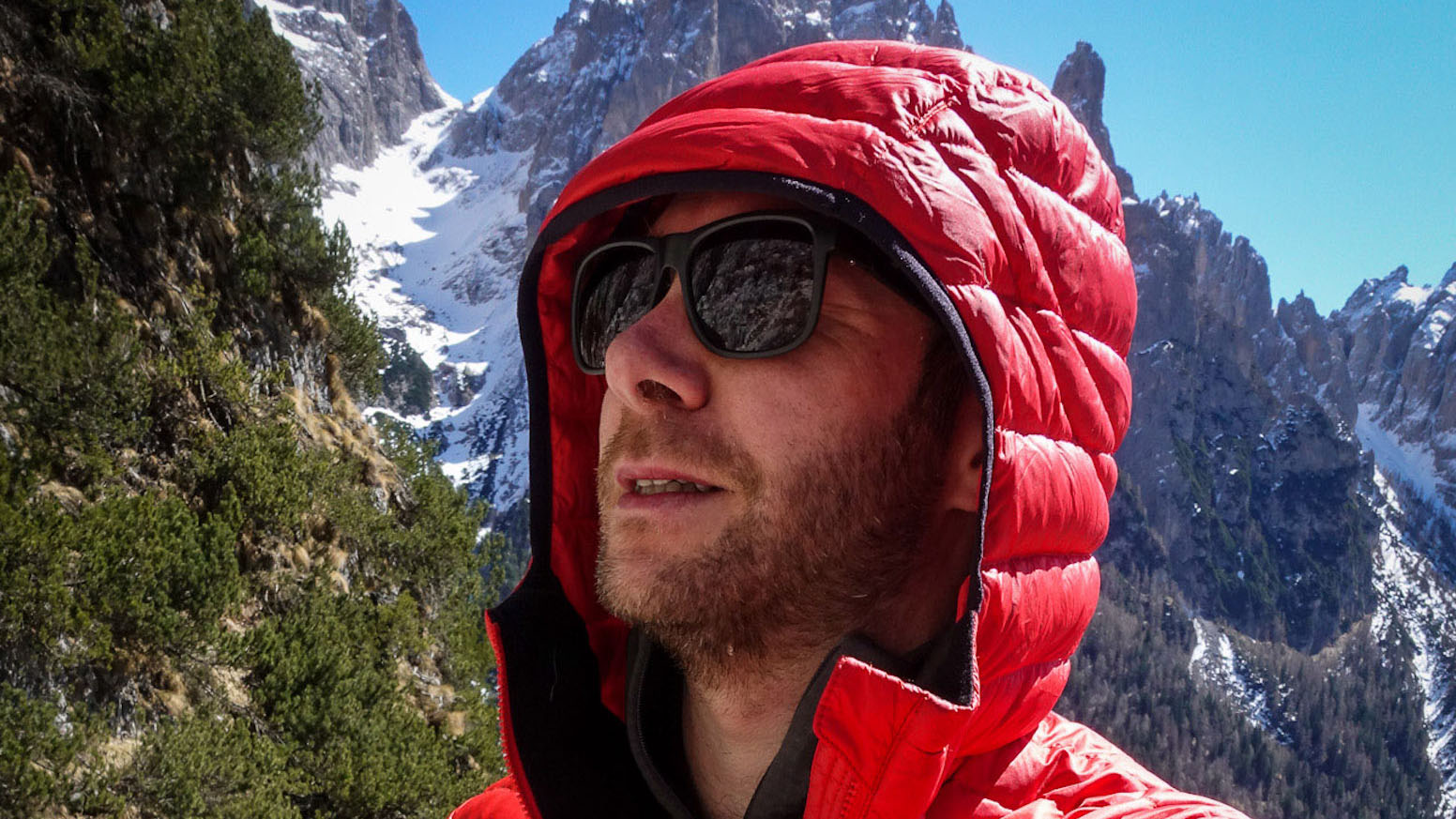
However, the jacket really came into its own when I’d take a breather having reached a windblown summit, or when I was ambling along an exposed ridgeline. It’s supremely comfortable and unrestrictive.
Its ‘guide approved’ pockets were handy and accessible on the go. I’d typically store my phone in the interior compartment to keep it close to my body’s warmth, while the exterior pockets were ideal for my map and my headlamp. Alternatively when it wasn’t cold enough to require gloves but still a little bit nippy, the front pockets were great as hand warmers.

Admittedly, my test period was a little late in the winter season and I haven’t yet had the opportunity to venture out into truly challenging conditions wearing the Seeker Down Hoody. While I’ve experienced sub-zero conditions up high during a few of my test outings, the weather was otherwise relatively benign. I’ll be back to update this review over the coming year after, hopefully, experiencing a few proper gnarly winter outings.




!["[T]he First and Fifth Amendments Require ICE to Provide Information About the Whereabouts of a Detained Person"](https://images.inkl.com/s3/publisher/cover/212/reason-cover.png?w=600)


